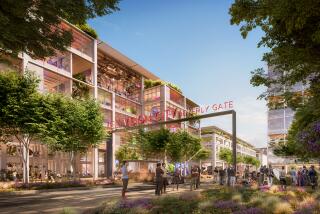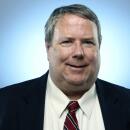L.A. Approves Landfill Expansion
- Share via
Despite opposition from residents, the Los Angeles City Council approved Tuesday a major expansion of Sunshine Canyon Landfill in Granada Hills, providing a place to send the city trash for the next 26 years. The vote was 9 to 5, with most San Fernando Valley representatives opposing plans to expand the landfill from 215 to 451 acres.
“This is not the right place for a landfill,” said Councilman Hal Bernson, who represents Granada Hills. “Do we want this to become the next Belmont [Learning Complex] fiasco?”
Supporters pointed to environmental impact reports that concluded that the health of neighbors will not be harmed.
Dozens of opponents listened and sometimes jeered during the two-hour debate. Officials said the city needs a place to dispose of its trash, and using Sunshine Canyon will save taxpayers $8.4 million annually over alternatives, such as trucking trash to a landfill near Lancaster.
“We create trash, and the reality is it’s going to go somewhere,” said Councilwoman Jackie Goldberg. More costly alternatives would “reduce funding for everything else in the city,” she said.
The council imposed more than 250 conditions on the landfill, many aimed at reducing the potential for ground-water and air pollution. The council also ordered that air quality be monitored at nearby Van Gogh Elementary School.
“This landfill has more mitigation than any landfill has had, more scrutiny than any landfill has had in this city up to this date,” Councilman Mike Hernandez said, drawing catcalls and boos from the audience.
The residents plan to sue the city, said Wayde Hunter, president of the North Valley Coalition.
Opponents said they were not surprised by the vote, noting that landfill operator Browning-Ferris Industries spent nearly $350,000 during the last 18 months to lobby City Hall on the issue.
“We hoped they would have seen we are just trying to protect our children,” Hunter said afterward. “Apparently the dollars that BFI waved at them clouded their judgment.”
BFI spokesman Arnie Berghoff said the company will employ the most advanced environmental control techniques at the landfill. A solid lining will prevent ground water contamination, tarps will be placed over trash at night to reduce air pollution and state-of-the-art equipment will be installed to burn off methane gas, Berghoff said.
Only 194 acres of the expanded landfill will be used for trash disposal, with the rest designated for support facilities and open space. The council required BFI to plant trees in an area of open space that will serve as a buffer between the landfill and homeowners to the south.
The company is prepared for any legal challenge, Berghoff said, and plans to begin operation in mid-2001. At that time, the landfill will take in 100% of the trash collected in the city, which will represent a third of all refuse to be dumped at the landfill.
The city now dumps half of its 3,400 tons a day in Sunshine, with the rest going to the Bradley Landfill in Sun Valley, which is set to close in 2001, according to Drew Sones, a spokesman for the city Sanitation Bureau.
The vote was largely along geographic lines, with most of the council members representing parts of the Valley in opposition.
In addition to Bernson, the expansion was opposed by council members Laura Chick of Tarzana, Alex Padilla of Pacoima, Joel Wachs of Studio City and Mike Feuer, whose district extends from Van Nuys to West Los Angeles.
Councilman Nate Holden was absent.
Feuer said the city has not done enough to find more rural landfills.
Wachs said the additional cost of trucking trash out of the city would be about 96 cents per household per month. A dump-free city would be worth the cost, Wachs said.
Valley school board member Julie Korenstein told the council that she is afraid the landfill will lead to some of the same problems she predicted for the Belmont Learning Complex project downtown, which is on a toxic contamination site.
Korenstein said the lesson of other trash dumps is that “landfills and communities and schools do not go together.”
But R. Nicholas Brown, a city hearing examiner, told the council that a review of a USC database on cancer cases in Southern California found “no evidence of an increased risk of cancer” in the area near the landfill between 1972 and 1992.
More to Read
Sign up for Essential California
The most important California stories and recommendations in your inbox every morning.
You may occasionally receive promotional content from the Los Angeles Times.











